The tall and evergreen pine trees always remain a popular choice in our gardens.
But why, you might wonder?
Well, it’s not just because they look nice, but also because they are easy to care for, and they don’t cost an arm and a leg!
However, there is a puzzling question gardeners often wonder about: Why does nothing grow under pine trees?
Listen! The answer lies in their dense shade, which keeps out precious sunlight and steals nutrients and water away from the plants.
It’s a bit of a natural puzzle!
But take it easy! Because we are here to explain this garden mystery.
In this blog post, we’ll unlock the secrets and hand you the keys to understanding everything.
Enough with the suspense! Let’s jump right in.

Pine Tree | A Bird’s Eye View!
Pine trees – members of the Pinus genus, are one of the most iconic coniferous trees on earth.
There are about 115 species of pine trees that are found in most temperate and tropical regions of the world.
These evergreen trees, known for their towering heights that can exceed 200 feet (60 meters), stand out with their needle-like leaves and cone-shaped fruits.
The needles are arranged in the form of pairs (called fascicles) and have an average length of 3–5 inches.
Related Article: How To Lay Pine Straw – A Comprehensive 8 Steps Guide
One interesting fact about these trees is that they can hold their needles for a long time without shattering.
Therefore, people love using them to make beautiful holiday wreaths.
If we talk about the pine cones, they are usually brownish and bear seeds.
Pine trees are generally considered as low-maintenance plants. They can handle extreme temperatures, grow in lousy soil, and even survive wildfires.
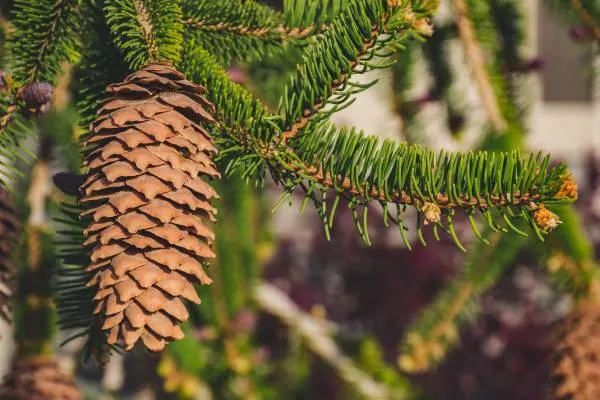
Why Plants Don’t Grow Under Pine Trees?
With their majestic height and enduring presence, pine trees often stand as dreadful neighbors.
Doesn’t matter if there are shrubs, vegetables, ground cover, or flowering plants trying to grow under pine trees, these perennial plants create a demanding environment that poses significant challenges to many plants trying to grow near them.
Let’s talk about which factors affect the plants that are not able to grow under pine trees.
Shallow Root System
Pine trees have an incredible root system.
A long, deep taproot serves as the primary anchor, much like how other trees anchor themselves to the ground.
But there is also a network of lateral root systems closer to the surface, only about a foot or less beneath the soil.
These are like the tree’s fingertips, searching for water and nutrients.
Now, here’s the catch: These surface roots are pretty greedy.
They slurp water and nutrients from the moist soil, like they’re at a big buffet, leaving little for the plants that try to grow under pine trees.
So, because pine trees have special roots, they do really well, but the plants nearby might find it hard to grow.
They’re like the guests at the buffet who arrive late only to find that all the good stuff is gone.
Dense Shade
Pine trees are perennial plants known to produce a lot of partial shade.
They are capable of dimming the sunlight that manages to pass through their dense canopy by a whopping 90%. It’s technically full shade, to be honest.
Now, this shade isn’t necessarily a bad thing.
In fact, people often plant pine trees precisely for this purpose – to create a shady, peaceful spot under them.
But there’s a twist to this tale of shade.
While it’s cozy under a pine tree’s partial shade, it can be challenging for sun-loving plants to grow under it.
They need the warm sun, and when the pine tree’s full shade is all around, it’s like they are guests at a night party without their dancing shoes.
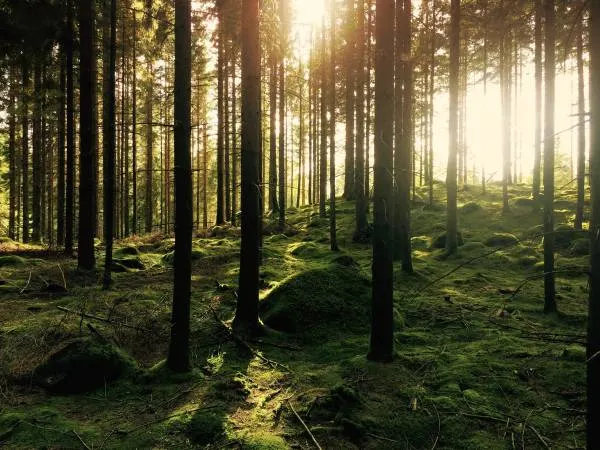
Pine Needles
Apart from the dense shade of pine trees, something interesting is happening beneath the canopy.
Feeling curious?
Listen! Pine tree not only casts deep shadows but also shower the whole ground cover with a lot of pine needles that create a thick crust-like mat.
This mat then prevents the sunlight and water from reaching the growing plants.
If you have any plants under the pine, they might struggle because of these falling needles.
But here is the real twist: some of these pine needles are allelopathic.
It means when they break down in the soil, they release chemicals that say,
“No room for others.”
It makes it tough for other plants to grow in those areas where pine trees hang out. It’s like they have their own secret plan to keep their space all to themselves.
Related Article: How to Get Rid of Pine Needles – 4 Excellent Methods!
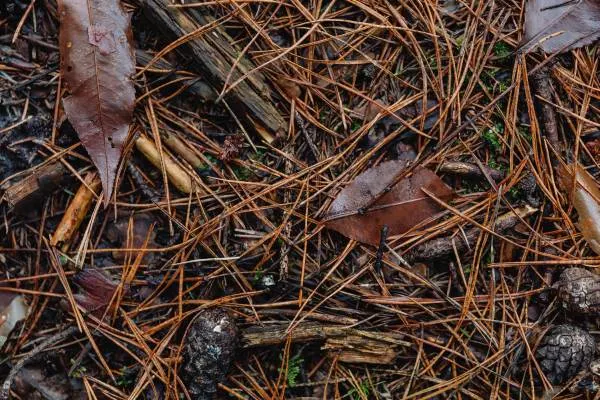
Acidic Soil
Pine trees prefer acidic soil, with a sweet spot having a pH of 5.5.
This acid-loving nature sets them apart from many garden plants, which thrive in slightly alkaline soil with a pH of 6.5 or higher.
But here’s where things get interesting.
Pine trees are like soil magicians, gradually transforming their surroundings.
Even if you initially plant them in more alkaline soil, they use their magic over time, shifting the soil pH towards the acidic soils end of the spectrum.
It’s like they have a secret contract with the soil itself.
But over the board soil acidity can cause a number of problems for other plants, including:
Stunted growth
Yellow leaves
Poor root development
Now, let’s see how to encourage plant growth under pine trees.
How to Encourage Plant Growth Under Pine Trees?
I know there is a bunch of reasons why plants don’t grow well under pine trees.
But here’s the exciting part: it doesn’t mean nothing can grow there!
In fact, there are some clever tricks to help plants thrive under these piney giants.
Now, let’s discuss all these tricks one by one and see how we can make the ground beneath the pine tree bloom with life.
Clear the Ground
To encourage healthy plant growth under pine trees, it’s essential to begin by clearing the ground effectively.
This initial step sets the foundation for a successful garden beneath these towering trees.
Start by clearing away any fallen pine needles, leaves, and other debris.
It not only improves the appearance of the area but also prevents these materials from smothering companion plants.
Eliminate existing weeds and prevent new ones from sprouting.
Weeds can compete with your desired plants for essential nutrients and water.
Pine tree roots can also compact the soil over time.
Use a garden fork to gently aerate the soil, allowing better water penetration and root development for your chosen plants.
Clearing the ground effectively ensures a clean and nutrient-rich environment for your plant to flourish beneath pine trees.
Modify the Soil
Modifying the soil under pine trees is critical in creating a favorable environment for plant growth.
Pine trees tend to create acidic soil conditions due to the needles they shed, so it’s essential to adjust the soil accordingly.
Begin by conducting a soil test to determine its pH level.
Most plants prefer a neutral pH, so if the soil is too acidic, you may need to adjust it by applying lime to raise the pH level and reduce acidity.
Follow the recommended application rates for your specific soil type and the type of plants you intend to grow.
This adjustment is vital for overcoming the challenges posed by the natural conditions created by pine trees.
Give Them Some TLC
Once you’ve prepared the ground cover plants and modified the soil, it’s crucial to provide ongoing care and attention to the plants you’re nurturing under pine trees.
Giving them some tender loving care (TLC 😋) ensures their continued growth and health in this unique environment.
You can start with regular watering.
Pine trees can be quite thirsty, and their roots can compete with the plants below for moisture. Keep a close eye on soil moisture levels and provide adequate water to prevent drought stress. Ensure that the soil is consistently moist but not waterlogged.
Incorporate organic matter such as compost or well-rotted manure into the soil. It helps improve soil structure, drainage, and nutrient retention.
Also, consider adding a layer of mulch around your plants. Mulch helps conserve moisture, regulate soil temperature, and suppress weed growth. Use materials like wood chips or pine straw, which are suitable for acidic soil conditions.
Depending on the specific nutrient needs of your chosen plants, you may need to add fertilizers rich in essential elements like nitrogen, phosphorus, and potassium.
Also, keep an eye out for signs of pests or diseases and take appropriate measures to control them.
Regular inspections can help catch issues early and prevent extensive damage.
Trim Your Pine Tree
Improving your plants’ well-being is as easy as giving them a little more sunshine.
All you need to do is do a bit of tree trimming.
Begin by carefully cutting away all the branches that are hanging lower than ten feet from the ground.
This way, you create a spacious area for sunlight to filter through.
For the upper branches, a little pruning can work wonders.
Trim them back just enough to allow that precious sunlight to reach the ground below. It’s like giving your plants a natural, healthy boost.
Remember, though, if you have young trees, don’t be too quick to trim too much.
Cutting them might harm their growth, so let them grow and develop naturally.
Related Article: How To Prune A Pine Tree in 8 Easy Steps
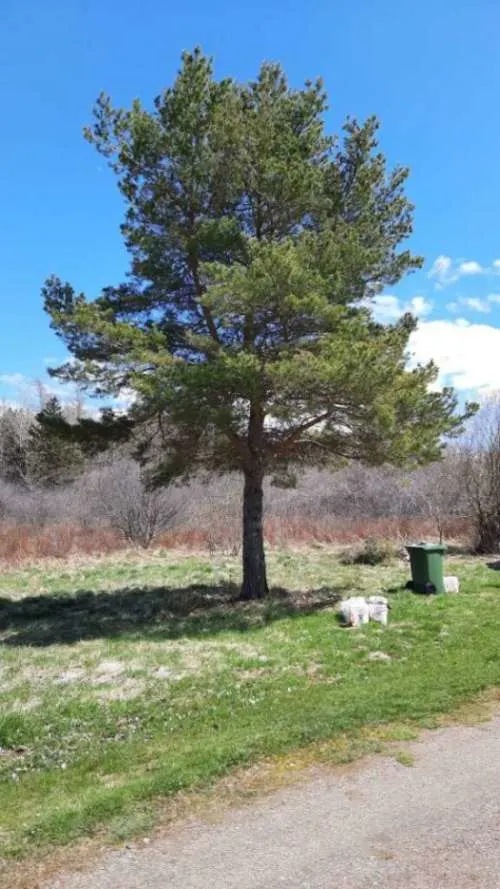
Choose the Right Plant
Selecting the appropriate plants for the specific conditions under pine trees is critical to successful gardening.
While choosing the best plants to grow under pine trees, one must consider these key points:
Opt for plants that are well-suited to partial shade or dappled sunlight. Pine trees tend to cast dense shade; not all plants can thrive in such conditions. Shade-loving species like Ferns (e.g., Ostrich Fern, Lady Fern) and Hostas are often good choices.
Consider plants that can adapt to or even benefit from the acidic soil conditions created by pine needles. Acid-loving plants like Azaleas, Rhododendrons, and certain Hydrangeas (e.g., Hydrangea macrophylla) are well-suited to these conditions.
Choose plants with shallow root systems or those that coexist well with tree roots. Groundcovers like pachysandra or barrenwort (Epimedium) are good options.
Plan for plants that offer seasonal interest throughout the year. It can include species with colorful foliage, spring or summer blooms, and even those with attractive seed heads for winter appeal. Examples include Coral bells (Heuchera) for colorful foliage and ornamental grasses like Japanese forest grass (Hakonechloa macra) for fall interest.
When you choose the right plants for the conditions under pine trees, you can create a garden that not only survives but thrives in this challenging environment.
Will Grass Grow Under Pine Trees?
Like other plants, growing grass under pine trees is challenging because it requires the same factors to grow that other plants need.
And pine trees refuse to provide them with that.
Therefore, in most cases, the grass is not able to grow under a pine tree. But it doesn’t mean you can’t grow it under these towering trees.
Choosing the right type of grass to grow under pine trees while considering your soil and light reaching it can increase your chances of success.
If your soil is sandy, Bermuda or Zoysia grass could be your hero.
For clay-based soil, Fescue or Bluegrass might be better.
Since pine trees tend to cast a lot of shade, go for grass types that can handle shade, like fescue or bluegrass.
Lastly, if your spot gets a lot of foot traffic, sturdy Bermuda or Zoysia grass is your best bet.
Remember, before planting that lush green carpet of grass, it’s time to roll up your sleeves and prepare the perfect soil bed.
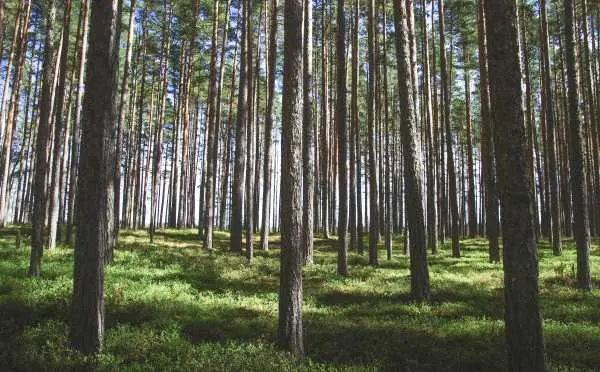
That’s all!
Now, to cap it off, let’s move toward the conclusion.
Conclusion!
Pine trees can pose a significant challenge to the growth of other plants, as they are not particularly hospitable for their fellow greenery.
They excel in this task by effectively employing specific factors, such as casting dense shade that blocks the sunlight from reaching any plant beneath their canopy.
Another contributing factor is the pine trees’ root system, which absorbs a significant share of nutrients and water from the soil.
Thus competing with plants attempting to grow beneath them.
Additionally, the presence of pine needles further compounds the challenge faced by other plants striving to thrive under pine trees.
Discussing these factor doesn’t means that nothing can flourish well under pine trees.
So, rather than being discouraged, you can apply particular strategies to nurture native plants beneath these towering trees.
Furthermore, there are specific shade-tolerant plants or those that thrive in slightly acidic soil conditions that readily flourish under pine trees.
So follow these strategies and say goodbye to the barren ground under your pine trees – it’s time to make your garden shine.
Regards,
Moiz Atiq.
